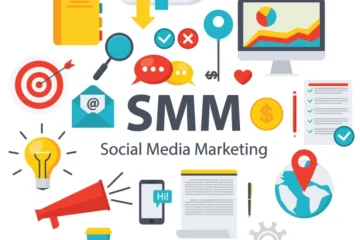Introduction
In an era where digital payments are becoming the norm, developing a payment app can be a lucrative business venture. Payment apps like PayPal, Venmo, and Cash App have revolutionized how people transfer money, pay bills, and conduct transactions. Whether it’s peer-to-peer payments, online shopping, or handling business transactions, a well-designed payment app can meet various financial needs efficiently. However, understanding the mobile app development cost is crucial for anyone considering this venture. This article will guide you through the process of developing a payment app, explore the current market stats for 2024, and provide a detailed breakdown of the costs involved.
Current Market Stats 2024
As of 2024, the global digital payment market continues to expand at an unprecedented rate. Here are some key statistics that underline the importance and growth of payment apps:
- Market Size: The global digital payment market is projected to reach $12.3 trillion by the end of 2024, growing at a CAGR of 19.4% from 2021 to 2024.
- User Adoption: Over 4 billion people are expected to use digital payment methods by 2024, with mobile payment apps accounting for a significant portion of this usage.
- Transaction Volume: Payment apps are expected to process over $2 trillion in transactions in 2024, driven by the increasing adoption of mobile payments in emerging markets.
- Business Impact: Businesses that offer payment apps or integrate mobile payments report an average increase of 30% in transaction volumes and a 25% reduction in transaction processing costs.
These statistics highlight the growing reliance on digital payment solutions, making it an opportune time to develop and launch a payment app. However, to succeed in this competitive market, you must carefully plan your development process and budget.
How to Develop a Payment App?
Developing a payment app involves several stages, from conceptualization to deployment. Here’s a step-by-step guide to help you navigate the process:
- Market Research and Analysis
- Before starting the development process, conduct thorough market research. Identify your target audience, analyze competitor apps, and understand the regulatory requirements for financial transactions in your target markets. This research will help you define the unique selling points of your app and identify gaps in the market.
- Define Core Features
- The success of your payment app depends on the features it offers. Some essential features to include are:
- User Registration and Authentication: Secure user sign-up and login processes, including multi-factor authentication.
- Payment Gateway Integration: Integration with popular payment gateways like Stripe, PayPal, or Braintree for seamless transactions.
- Peer-to-Peer Transfers: Allow users to send and receive money instantly.
- Bill Payments: Enable users to pay bills directly through the app.
- Transaction History: Provide users with a detailed history of their transactions.
- Security Features: Implement encryption, biometric authentication, and fraud detection to ensure user data and transactions are secure.
- Notifications: Push notifications for transaction alerts, payment reminders, and promotional offers.
- The success of your payment app depends on the features it offers. Some essential features to include are:
- Choose the Right Technology Stack
- Selecting the appropriate technology stack is crucial for the performance and scalability of your payment app. The choice will depend on the platform (iOS, Android, or both), the complexity of the app, and your budget. Commonly used technologies include:
- Frontend: React Native, Flutter, or Swift for iOS and Kotlin for Android.
- Backend: Node.js, Python, or Ruby on Rails for server-side development.
- Database: MySQL, PostgreSQL, or MongoDB for storing user data and transaction records.
- Security: SSL/TLS encryption, OAuth for secure API authentication, and PCI DSS compliance for handling payment information.
- Selecting the appropriate technology stack is crucial for the performance and scalability of your payment app. The choice will depend on the platform (iOS, Android, or both), the complexity of the app, and your budget. Commonly used technologies include:
- UI/UX Design
- A user-friendly design is essential for retaining users and ensuring a smooth transaction process. Focus on creating an intuitive interface with easy navigation, clear CTAs (Call to Action), and responsive design for different screen sizes. Consider hiring professional UI/UX designers to create a visually appealing and functional app layout.
- Development and Testing
- The development phase involves coding the app’s frontend and backend, integrating APIs for payment gateways, and implementing security protocols. It’s crucial to adopt Agile development methodologies to allow for iterative testing and adjustments. Rigorous testing is required to identify and fix bugs, ensure the app’s security, and validate its performance under various conditions.
- Compliance and Security
- Payment apps must comply with various regulations, including PCI DSS (Payment Card Industry Data Security Standard), GDPR (General Data Protection Regulation), and local financial regulations. Ensure your app meets these requirements to avoid legal issues. Implement strong security measures such as encryption, secure APIs, and fraud detection systems to protect user data.
- Launch and Marketing
- Once development and testing are complete, prepare for the app’s launch. Create a marketing strategy that includes pre-launch promotions, app store optimization (ASO), and targeted advertising. Launch the app on the appropriate platforms and monitor user feedback to make necessary improvements.
- Post-Launch Support
- After launch, continuous monitoring and updates are essential to address any issues, improve features, and ensure compatibility with new OS versions. Consider offering 24/7 customer support to assist users with any problems they may encounter.
Payment App Development Cost
The mobile app development cost for a payment app can vary significantly depending on various factors, including app complexity, platform, technology stack, and development team location. Here’s a breakdown of the key cost components:
- App Complexity
- Basic Payment Apps: These apps include essential features like user registration, basic payment processing, and transaction history. Development costs for a basic payment app range from $20,000 to $50,000.
- Intermediate Payment Apps: These apps offer additional features like bill payments, peer-to-peer transfers, and advanced security protocols. Costs for intermediate apps range from $50,000 to $100,000.
- Advanced Payment Apps: These apps include comprehensive features like multi-currency support, AI-driven fraud detection, and integration with multiple payment gateways. Development costs for advanced apps can exceed $100,000 and go up to $200,000 or more.
- Platform and Technology Stack
- The choice of platform (iOS, Android, or both) significantly impacts development costs. Developing for both platforms typically increases costs by 30% to 40%. Additionally, the technology stack chosen for the frontend, backend, and security features will also affect the overall budget.
- Design and User Experience
- A well-designed user interface that offers a seamless experience is crucial for payment apps. Custom UI/UX design can add $5,000 to $20,000 to the overall development cost, depending on the complexity and design requirements.
- Development Team
- The cost of hiring a development team varies based on their location and expertise. In the US, developers typically charge between $100 to $200 per hour. A payment app requiring 800 development hours could cost between $80,000 and $160,000. Hiring developers from regions like Eastern Europe or India can reduce costs by 30% to 50%, without compromising on quality.
- Security and Compliance
- Implementing robust security features and ensuring compliance with regulations like PCI DSS can add $10,000 to $50,000 to the development cost, depending on the level of security required.
- Third-Party Integrations
- Integrating third-party services such as payment gateways, CRM systems, and analytics tools can add $10,000 to $30,000 to the overall cost. Ongoing costs may also apply to API usage and maintenance.
- Post-Launch Maintenance
- After launching the app, ongoing maintenance is necessary to fix bugs, update features, and ensure compatibility with new devices and OS versions. Annual maintenance costs typically amount to 15% to 20% of the initial development cost.
Considering these factors, the total mobile app development cost for a payment app can range from $20,000 for a basic version to over $200,000 for a feature-rich, advanced app.
Conclusion
Developing a payment app is a complex but rewarding endeavor, with the potential to tap into a rapidly growing market. You can hire mobile app developers to develop a payment app. Understanding the mobile app development cost is crucial to planning your budget and ensuring a successful launch. Whether you’re developing a basic payment solution or a sophisticated app with advanced features, hiring experienced developers is key. By carefully selecting the right development team, technology stack, and features, you can create a payment app that meets user expectations and stands out in a competitive market.
FAQs
- What are the most important features to include in a payment app?
- Essential features include secure user registration, payment gateway integration, peer-to-peer transfers, bill payments, transaction history, and robust security measures like encryption and multi-factor authentication.
- How long does it take to develop a payment app?
- The development timeline varies depending on the app’s complexity. A basic payment app may take 3 to 6 months, while a more advanced app could take 9 to 12 months or longer.
- What factors influence the cost of payment app development?
- Key factors include the app’s complexity, platform, design requirements, development team rates, security and compliance needs, and third-party integrations.
- Can I reduce the cost of developing a payment app?
- Yes, you can reduce costs by focusing on essential features, choosing a cross-platform development approach, and hiring developers from regions with lower hourly rates while ensuring they have the necessary expertise.




